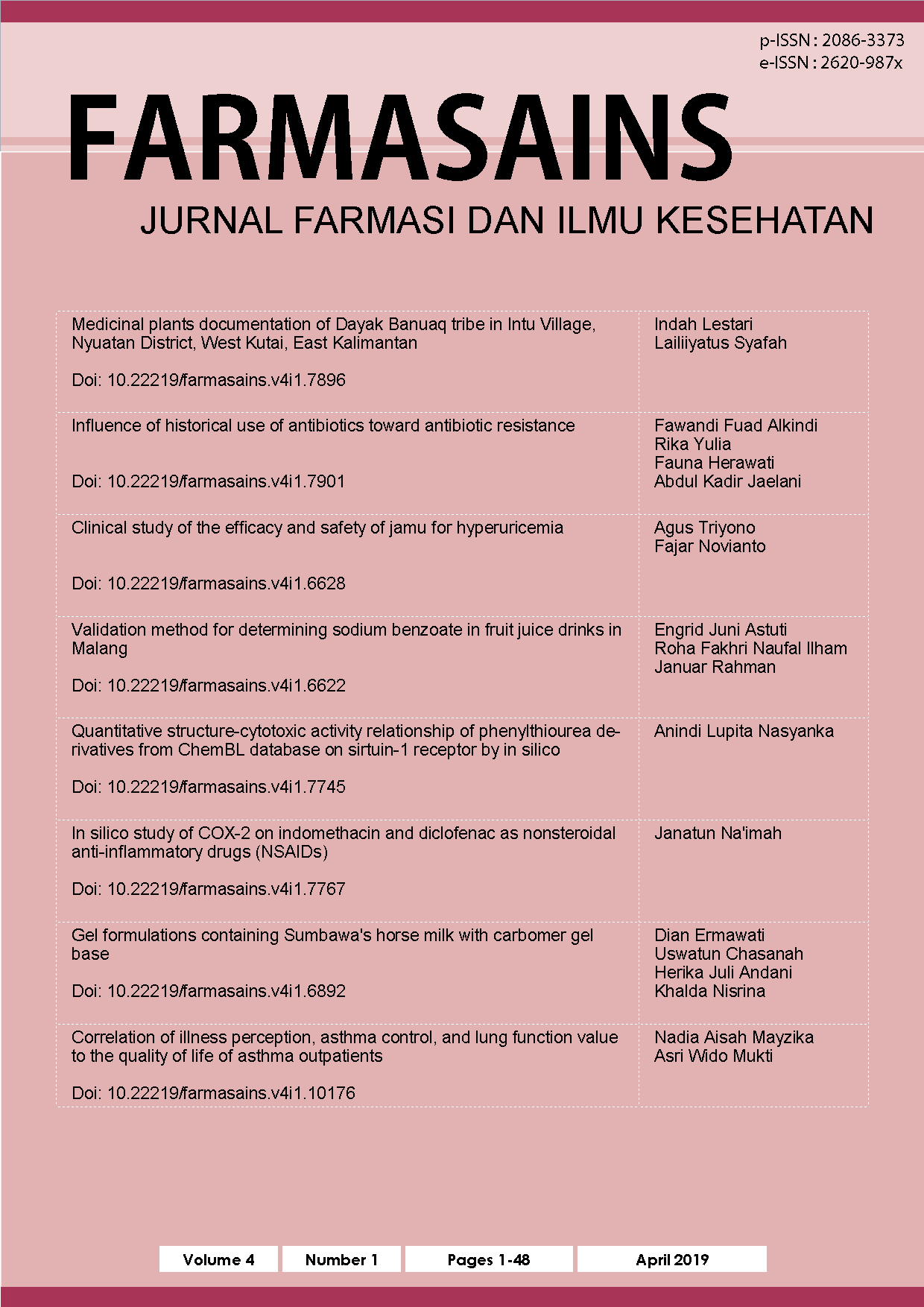Medicinal plants documentation of Dayak Banuaq tribe in Intu Village, Nyuatan District, West Kutai, East Kalimantan
DOI:
https://doi.org/10.22219/farmasains.v4i1.7896Keywords:
Documentation, Medicinal plant, Dayak Benuaq tribe, West Kutai, East KalimantanAbstract
The Dayak Benuaq tribe is one of the tribes in Indonesia who live in East Kalimantan. They have various knowledge related to raw materials and medical treatment traditions for generations that have never been documented, especially in Intu Lingau Village, Nyuatan District, West Kutai, East Kalimantan. This study aims to documentation of medicinal plants and herbs of the local communities. The finding shows that there are 104 plants used, which is divided into 34 families. The most common plant parts used in the treatment were leaves, the most common processing method was boiling, and the most utilized method was by drinking.Downloads
References
Arsyah, D. C. (2014). Kajian Etnobotani Tanaman Obat (Herbal) dan Pemanfaatannya dalam Usaha Menunjang Kesehatan Keluarga di Dusun Turgo, Purwobinangun, Pakem, Sleman. Skripsi Prodi Biologi. Fakultas Sains dan Teknologi. Sleman.
Lestari, S. (2015, December 25). Suku Dayak Benuaq: Menjaga Hutan, Merawat Warisan Budaya Ulap Doyo. Retrieved from https://www.bbc.com.
Sada, J. T., & Tanjung, R. H. (2010). Keragaman Tumbuhan Obat Tradisional di Kampung Nansfori Distrik Supiori Utara, Kabupaten Supiori–Papua. Jurnal Biologi Papua, 2(2), 39-46.
Simbala, H. E. (2016). Identifikasi Dan Pemanfaatan Tumbuhan Obat Suku Dani Di Kabupaten Jayawijaya Papua. Jurnal MIPA, 5(2), 103-107.
Zaman, M. (2009). Etnobotani Tumbuhan Obat di Kabupaten Pamekasan Madura Provinsi Jawa Timur (Doctoral dissertation, Universitas Islam Negeri Maulana Malik Ibrahim).
Downloads
Published
How to Cite
Issue
Section
License
Copyright (c) 2019 Indah Lestari, Lailiiyatus Syafah

This work is licensed under a Creative Commons Attribution 4.0 International License.
Authors who publish with this journal agree to the following terms:
a. Authors retain copyright and grant the journal right of first publication with the work simultaneously licensed under a Creative Commons Attribution License that allows others to share the work with an acknowledgement of the work's authorship and initial publication in this journal.
b. Authors are able to enter into separate, additional contractual arrangements for the non-exclusive distribution of the journal's published version of the work (e.g., post it to an institutional repository or publish it in a book), with an acknowledgement of its initial publication in this journal.
c. Authors are permitted and encouraged to post their work online (e.g., in institutional repositories or on their website) prior to and during the submission process, as it can lead to productive exchanges, as well as earlier and greater citation of published work (See The Effect of Open Access).













